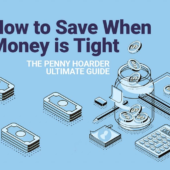by Dave Schafer
Contributor
There’s no way around it — college is expensive. This means that for many students, taking out a loan is the only way to realistically cover these expenses. And, like most other loans, student loans accrue interest.
In this article, we’ll explore the current interest rates across the most common student loan products, including federal and private student loans.
When we discuss federal interest rates on student loans in this article, we’re referring to what the rates would be when the freeze is lifted.
Something you may notice is that, at the lowest end, private lenders seem to offer better interest rates than federal. It is important to note that these lowest interest rates are very difficult to get — your credit needs to be outstanding.
It’s also important to remember that, although fixed interest rates appear to have a higher range in the tables below, your interest rate by definition can change. So, while you may qualify for a lower interest rate on a variable-rate loan, it’s entirely possible that this rate will eventually go up and become higher than you would have gotten with the fixed-rate loan. This is simply the tradeoff (and risk) of variable interest rates.
Federal Loan Interest Rates at a Glance
Federal rates increased across the board for the 2021-2022 school year by nearly a whole percentage point. That’s unfortunate, but they are still lower than they have been for years, and generally much lower than an equivalent private student loan.
Federal loans come in two basic types: subsidized and unsubsidized. The primary difference is around when the interest starts accruing:
There are some other differences, but they’re relatively minor compared to this.
The last thing to cover with federal loans is the loan fee (also known as the origination fee). This fee is calculated as a percentage of the total loan amount and then deducted automatically from each disbursement. In practice, this means you’ll receive a smaller loan than the amount you actually borrowed.
Private Loan Interest Rates at a Glance
The wide variation in interest rate ranges is due to two factors: different lenders offering different rates, and the fact that the rate you’ll get is impacted by your credit and other factors.
As mentioned above, fixed interest rates tend to have higher rates on paper, but you don’t have to worry about that rate increasing on you, which is a very real possibility with variable-rate loans.
Loan Refinance Interest Rates at a Glance
If your credit is good, it’s possible to refinance your existing student loan to get a lower interest rate. This is not always possible, but it can be an option worth exploring. These refinanced interest rates can themselves be lower than “normal” private rates, so it can be an option worth exploring.
Although federal and private loans are technically different, they often follow similar trends. In other words, when federal student loan interest rates go up, private rates are likely to do the same. Likewise for when they go down. Let’s look at what actually goes into determining federal and private interest rates.
These student loan interest rates are set each year by Congress, based on the high yield of the 10-year Treasury note auction in May. The new rate applies to loans disbursed from July 1 to June 30 of the following year.
Federal student loan rates are always fixed. This means that they won’t change during the life of the loan — whatever interest rate you get when you take out the loan is what you’ll keep until it’s paid off (it changes with student loan refinancing).
These loans are funded by banks, credit unions, and other private lenders. As such, interest rates vary between the different lenders, and it’s worth shopping around whenever possible.
Private lenders usually offer both fixed-rate and variable-rate loans. Fixed-rate means that your interest rate remains the same over the life of the loan. It can neither increase nor decrease.
A variable interest rate, on the other hand, means that your interest rate can fluctuate with the market. Sometimes you can get lucky and have it go down for a period of time. However, the risk with variable-rate loans is that the interest rate goes up significantly and you end up paying much more than anticipated.
It’s important to keep this in mind when selecting a loan. It may be worthwhile to take a slightly higher fixed interest rate rather than assume the risks of a variable rate.
The interest rate cuts in 2020 had a major ripple effect on student loan interest rates. Despite the slowly recovering economy, interest rates remain lower than they’ve been in years, for federal student loans and private fixed-rate and variable interest rate loans. This is excellent news for student loan borrowers, and we hope to see these rates remain low in the coming year.
Currently, all federal student loan debt is frozen until Sept. 1, 2022. This means that rates are set to zero and no payments are due until that date. This loan repayment freeze originally began in March 2020 at the outset of the pandemic and has been extended six times at this point.
Let’s explore the pros and cons of the two major classes of student loans — federal and private. Neither is perfect, as we’ll see. Rather, each is suited to particular situations and types of borrowers.
If you still have questions about student loan interest rates, don’t worry — we’ve got answers. Here are some of the most common questions.
Student loan interest rates range from a low of 1.04% to a high of almost 15%. The rates depend on whether you’re looking at federal or private, which type of loan, which private lender you go with, your credit history, and more.
That said, here’s the quick bullet list:
This is a hard question to answer. They are expected to remain fairly low for the foreseeable future, but this can always change. For the 2021-2022 school year, federal rates did increase, but they are still a good bit lower than they were prior to the pandemic.
Rates increased for the 2021-2022 school year, but remain lower than they were prior to the COVID-19 pandemic. So while they didn’t drop this year, they have dropped significantly compared to a few years ago.
A subsidized federal student loan is one in which interest is paid by the U.S. Department of Education Department while you’re enrolled at least half-time in college. An unsubsidized loan, on the other hand, begins accruing interest immediately on disbursement, even if you’re still enrolled in school.
Subsidized student loans have a six-month grace period after graduating. During this time, no payments are due, and the Education Department continues to pay the interest on the loan.
An unsubsidized loan, on the other hand, begins accruing interest immediately on disbursement, even if you’re still enrolled in school. The student is responsible for this interest. Unsubsidized loans still have a six-month grace period after graduation, but interest continues to accrue during this time. The interest then capitalizes, which means it gets added to the original loan amount.
Federal student loan rates are set each spring and go into effect July 1, running until June 30 of the following year. At that point, the new interest rate will take effect.
Student loan refinancing is a way to decrease the amount of interest paid on your loan. Essentially, when you refinance, the new lender pays off your existing loan and gives you a new one with new terms.
Not everyone can refinance — there are fairly strict rules to evaluate your credit and income to determine eligibility. Additionally, you generally reset the length of your loan term when you refinance, so it can sometimes end up costing you more money.
Finally, while you can refinance a federal loan, you lose the extra benefits they come with, including income-based repayment options.
This is a special repayment option available to federal borrowers that lets you tailor your monthly payments to your income. These plans are typically based on a percentage of your monthly disposable income. This can be quite a bit lower than you’d otherwise pay. The tradeoff is that it can take much longer to pay off the loan.
Additionally, loans on these repayment plans are automatically forgiven after 20-25 years of payments.
Penny Hoarder contributor Dave Schafer has been writing professionally for nearly a decade, covering topics ranging from personal finance to software and consumer tech.
Ready to stop worrying about money?
Get the Penny Hoarder Daily
Privacy Policy
© 2022 The Penny Hoarder. – All rights reserved.
Privacy Policy and Terms of Service | Do Not Sell My Personal Information | Cookies Settings






